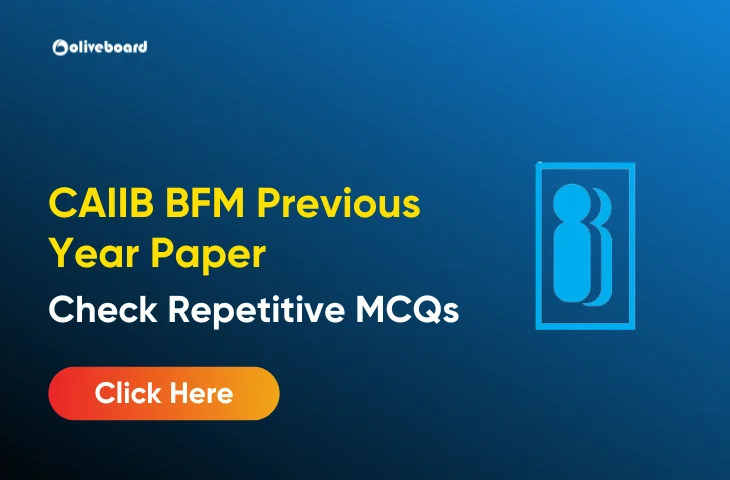CAIIB BFM Previous Year Paper
The CAIIB BFM Previous Year Paper is an essential paper for professionals aiming to advance their career in banking and finance. It focuses on Bank Financial Management (BFM) and is part of the CAIIB exam, which is a crucial qualification for bank employees in India. In this article, we will break down the key components of CAIIB BFM, including its modules, topics, and essential details to help you prepare effectively.
CAIIB BFM Paper – Overview
CAIIB Paper-2, also known as the Bank Financial Management (BFM) paper, consists of four modules. The four modules cover a wide range of banking and financial topics. These include:
- Module A: International Banking
- Module B: Risk Management
- Module C: Treasury Management
- Module D: Balance Sheet Management
JAIIB BFM Most Repetitive MCQs
- What does JAIIB stand for?
- A) Junior Associate of the Indian Institute of Bankers
- B) Junior Analyst of Indian Insurance Board
- C) Joint Association of Indian Investment Bankers
- D) Junior Accountant in Indian Banking
- Answer: A
- Which of the following is a module under JAIIB?
- A) Principles and Practices of Banking
- B) Financial Markets and Products
- C) Indian Economy
- D) Marketing Management
- Answer: A
- Which regulatory body governs the banking sector in India?
- A) SEBI
- B) IRDAI
- C) RBI
- D) NABARD
- Answer: C
- The Negotiable Instruments Act was enacted in which year?
- A) 1880
- B) 1881
- C) 1882
- D) 1883
- Answer: B
- What is the primary objective of KYC guidelines?
- A) To ensure customer satisfaction
- B) To prevent money laundering
- C) To enhance digital banking
- D) To increase market competition
- Answer: B
- Which act governs SARFAESI provisions?
- A) 1999
- B) 2000
- C) 2002
- D) 2005
- Answer: C
- What is the full form of CRR in banking?
- A) Credit Retention Ratio
- B) Cash Reserve Ratio
- C) Current Reserve Requirement
- D) Capital Retention Ratio
- Answer: B
- What is the minimum capital requirement for small finance banks as per RBI?
- A) ₹50 Crores
- B) ₹100 Crores
- C) ₹200 Crores
- D) ₹500 Crores
- Answer: B
- What is a demand draft?
- A) A type of loan
- B) A negotiable instrument
- C) A type of savings account
- D) A non-banking financial product
- Answer: B
- Which of the following is NOT a feature of RTGS?
- A) Real-time settlement
- B) Minimum transaction value of ₹2 lakh
- C) Operates 24×7
- D) Used for small value transactions
- Answer: D
- What does CASA stand for in banking terms?
- A) Current Account Savings Account
- B) Capital and Savings Account
- C) Cash and Security Assets
- D) Credit and Savings Allocation
- Answer: A
- Which of the following is NOT a financial instrument?
- A) Bonds
- B) Fixed Deposits
- C) Gold Jewelry
- D) Equity Shares
- Answer: C
- What is the maximum validity of a cheque in India?
- A) 30 days
- B) 60 days
- C) 90 days
- D) 180 days
- Answer: C
- Which committee recommended the formation of NABARD?
- A) Narasimham Committee
- B) B. Sivaraman Committee
- C) Rangarajan Committee
- D) Kelkar Committee
- Answer: B
- Which of these is a function of the RBI?
- A) Printing of currency notes
- B) Regulation of the securities market
- C) Insurance regulation
- D) Managing foreign investments
- Answer: A
- Under which Act is priority sector lending governed?
- A) Banking Regulation Act, 1949
- B) Reserve Bank of India Act, 1934
- C) Companies Act, 2013
- D) SARFAESI Act, 2002
- Answer: A
- What is the full form of NPA?
- A) Non-Paying Assets
- B) Non-Performing Assets
- C) Net Performing Accounts
- D) Non-Promotional Accounts
- Answer: B
- Which of the following is a primary function of commercial banks?
- A) Tax collection
- B) Credit creation
- C) Issuing currency
- D) Regulating stock exchanges
- Answer: B
- What does the Basel Accord deal with?
- A) Money laundering
- B) Banking regulations
- C) Tax evasion
- D) Insurance fraud
- Answer: B
- Which of the following is NOT an asset classification in banking?
- A) Standard Assets
- B) Sub-standard Assets
- C) Liquid Assets
- D) Doubtful Assets
- Answer: C
- Which is the first Indian bank to open a branch outside India?
- A) Punjab National Bank
- B) Bank of Baroda
- C) State Bank of India
- D) Allahabad Bank
- Answer: B
- In which year was the GST implemented in India?
- A) 2015
- B) 2016
- C) 2017
- D) 2018
- Answer: C
- What is the main objective of financial inclusion?
- A) To promote digital payments
- B) To enhance access to financial services
- C) To increase GDP growth
- D) To ensure economic stability
- Answer: B
- Which of these is NOT part of the CAMELS rating?
- A) Capital adequacy
- B) Asset quality
- C) Management quality
- D) External debt
- Answer: D
- What is the primary goal of monetary policy?
- A) Promote financial inclusion
- B) Control inflation and stabilize currency
- C) Increase the stock market index
- D) Regulate insurance companies
- Answer: B
- Which act governs the regulation of foreign exchange in India?
- A) FEMA
- B) FERA
- C) FRBM
- D) SEBI Act
- Answer: A
- What is the role of SIDBI in India?
- A) Financing small-scale industries
- B) Regulating large industries
- C) Promoting exports
- D) Managing rural development
- Answer: A
- Which of these is a treasury bill maturity period?
- A) 30 days
- B) 60 days
- C) 91 days
- D) 120 days
- Answer: C
- What is meant by “Repo Rate”?
- A) Rate at which RBI lends money to banks
- B) Rate at which banks lend to RBI
- C) Tax rate on repossessed items
- D) None of the above
- Answer: A
- Which is the apex institution for rural credit in India?
- A) NABARD
- B) RBI
- C) SIDBI
- D) SEBI
- Answer: A
- What is the maximum insurance cover provided by DICGC per depositor?
- A) ₹1 Lakh
- B) ₹2 Lakhs
- C) ₹5 Lakhs
- D) ₹10 Lakhs
- Answer: C
- What is the statutory liquidity ratio (SLR)?
- A) Reserve maintained by banks with the RBI
- B) Reserve maintained by banks in the form of gold, cash, or securities
- C) Loan-to-deposit ratio
- D) Cash deposits with RBI
- Answer: B
- Which bank introduced the first credit card in India?
- A) ICICI Bank
- B) HDFC Bank
- C) SBI
- D) Central Bank of India
- Answer: D
- What is the maturity period of Kisan Vikas Patra?
- A) 5 years
- B) 7 years 6 months
- C) 10 years
- D) 12 years
- Answer: B
- What does “SWIFT” stand for in banking?
- A) Society for Worldwide Interbank Financial Telecommunication
- B) Secure Worldwide Internal Financial Transactions
- C) Simple Worldwide Interbank Financial Transactions
- D) Society for Worldwide Internet Financial Transfers
- Answer: A
- Which is the highest denomination currency note currently in circulation in India?
- A) ₹500
- B) ₹2000
- C) ₹1000
- D) ₹100
- Answer: A
- What does “CASA ratio” signify?
- A) Ratio of current and savings accounts to total deposits
- B) Ratio of cash reserves to savings accounts
- C) Ratio of current accounts to savings accounts
- D) None of the above
- Answer: A
- Which of these is NOT a payment bank in India?
- A) Airtel Payments Bank
- B) India Post Payments Bank
- C) HDFC Bank
- D) Paytm Payments Bank
- Answer: C
- The term “ALM” in banking stands for?
- A) Asset Liability Management
- B) Accounts Liability Management
- C) Asset Lending Mechanism
- D) Asset Lease Management
- Answer: A
- Which act governs the prevention of money laundering in India?
- A) SARFAESI Act
- B) Prevention of Money Laundering Act
- C) Companies Act
- D) Income Tax Act
- Answer: B
- What does “Core Banking” refer to?
- A) Banking services provided to corporate customers
- B) Centralized online real-time exchange banking
- C) Traditional branch-based banking
- D) None of the above
- Answer: B
- Which of the following is a retail banking product?
- A) Home loans
- B) SME financing
- C) Corporate loans
- D) Export credit
- Answer: A
- What is the meaning of “financial literacy”?
- A) Ability to read financial documents
- B) Understanding financial concepts and managing money
- C) Preparing financial reports
- D) Working in financial institutions
- Answer: B
- Who regulates the stock markets in India?
- A) RBI
- B) IRDAI
- C) SEBI
- D) NABARD
- Answer: C
- Which of the following is an essential feature of a bank guarantee?
- A) It is a financial commitment
- B) It is issued against customer deposits
- C) It requires collateral
- D) All of the above
- Answer: D
- Which type of account is opened by an NRI in India to deposit income earned abroad?
- A) NRO Account
- B) NRE Account
- C) FCNR Account
- D) Resident Savings Account
- Answer: B
- Which is the apex body for housing finance in India?
- A) NHB
- B) NABARD
- C) HUDCO
- D) SBI
- Answer: A
- What does “TDS” stand for?
- A) Tax Deducted at Source
- B) Tax Deposited by Source
- C) Transfer of Deducted Salary
- D) Tax on Dividend and Shares
- Answer: A
- Which of the following is a liability for a bank?
- A) Loans disbursed
- B) Customer deposits
- C) Investments in securities
- D) None of the above
- Answer: B
- What is “digital currency” issued by a central bank called?
- A) Cryptocurrency
- B) Central Bank Digital Currency (CBDC)
- C) Fiat money
- D) E-wallet money
- Answer: B
CAIIB BFM Syllabus in Detailed
The syllabus for CAIIB BFM Paper-2 is structured into four modules, each focusing on a specific area of financial management in banking.
| Module | Topics |
| Module A: International Banking | Foreign Exchange Business, Liberalised Remittance Scheme (LRS), Correspondent Banking, Letters of Credit, Export/Import Finance, External Commercial Borrowings, Risks in Foreign Trade, EXIM Bank, Role of RBI & FEMA, Technology in International Banking |
| Module B: Risk Management | Risk Management Framework, Risks in Banking, Market Risk, Credit Risk, Operational Risk, Liquidity Risk, Basel Framework, Liquidity Coverage Ratio, Capital Adequacy, Stress Testing |
| Module C: Treasury Management | Treasury Functions, Risk Management, Derivative Products, Asset-Liability Management (ALM), Funding and Regulatory Aspects, Domestic & Global Markets, Treasury Risk Management |
| Module D: Balance Sheet Management | Asset & Liability Management, Capital Adequacy, Asset Classification, Provisioning Norms, Interest Rate Risk Management, Liquidity Management, Profit Planning, RAROC (Risk-Adjusted Return on Capital) |
Conclusion
The CAIIB BFM Paper December 2024 is a challenging but rewarding exam that requires thorough preparation. Understanding the detailed syllabus and focusing on the key topics of international banking, risk management, treasury management, and balance sheet management will significantly enhance your chances of success.
- CAIIB BRBL Questions with Detailed Solutions and Answers
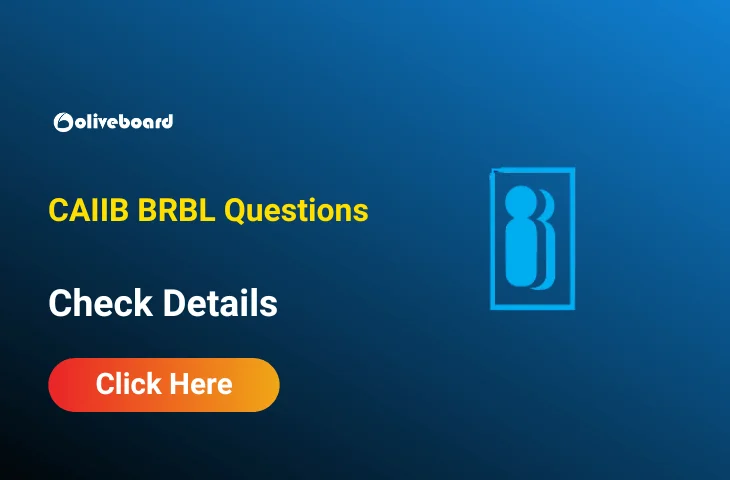
- CAIIB Previous Year Question Paper, Download Free PDF
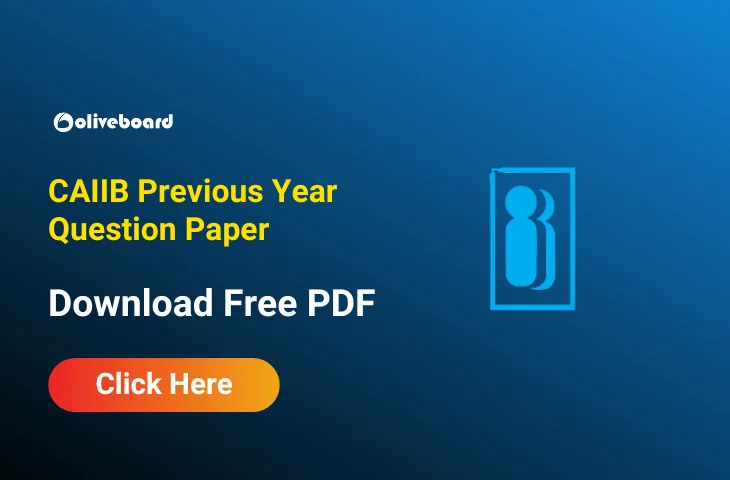
- CAIIB Electives Exam Analysis 2025, December All Paper Review
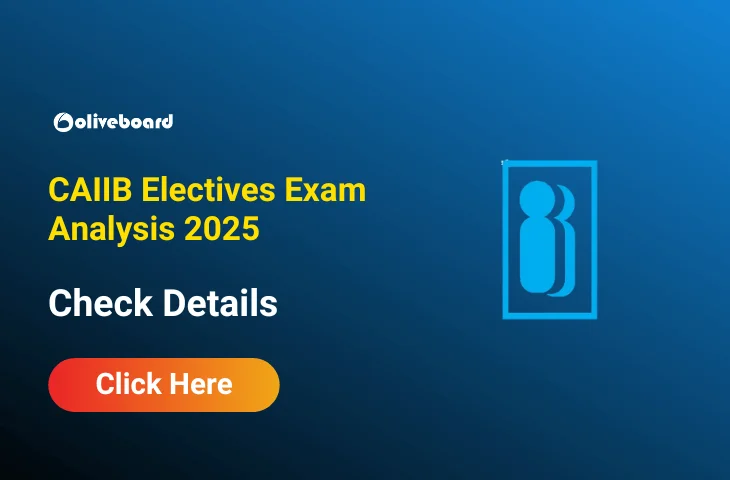
- CAIIB BRBL Exam Analysis 2025, December Cycle Review
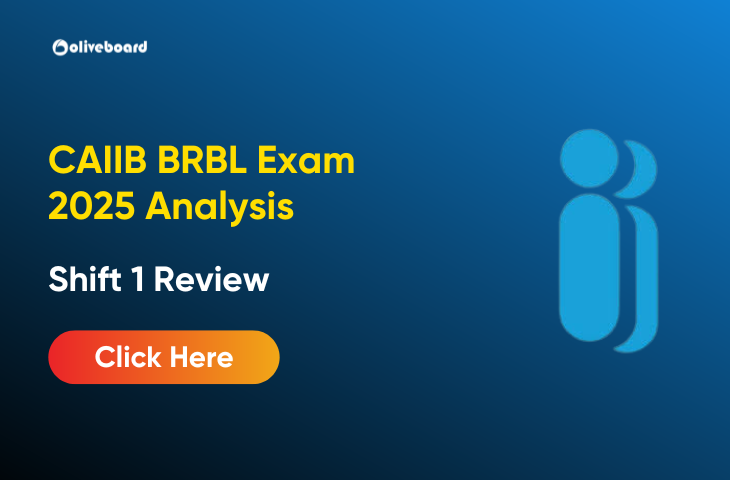
- CAIIB ABFM Exam Analysis 2025, 13th December Review
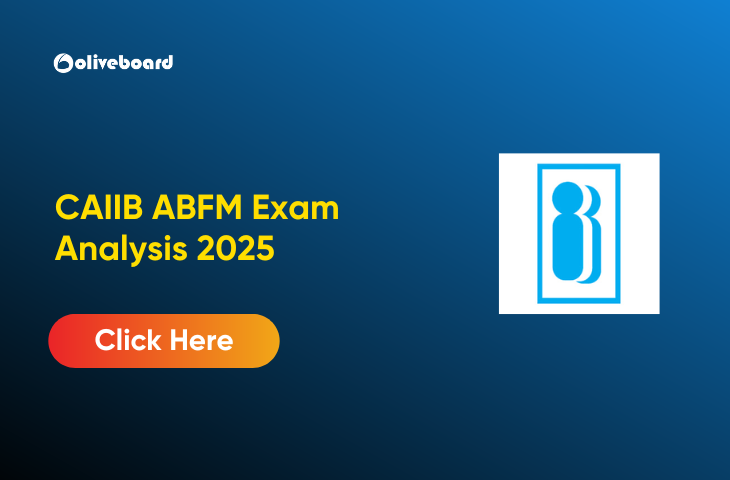
- CAIIB BFM Exam Analysis 2025, 7th December Difficulty Level
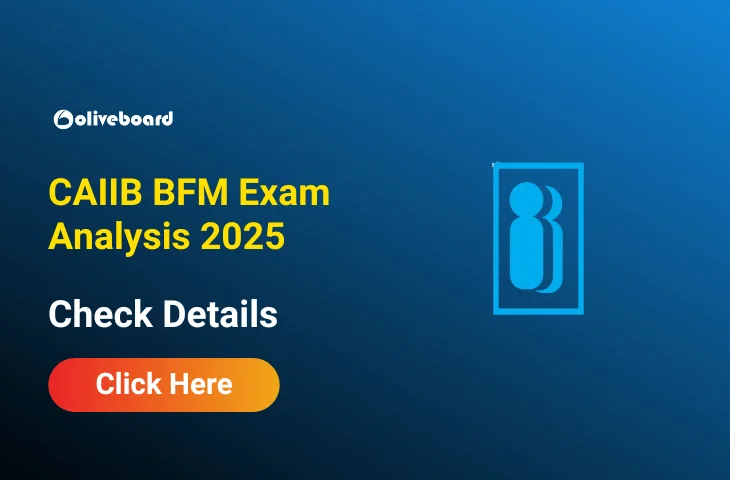

Hello there! I’m a dedicated Government Job aspirant turned passionate writer & content marketer. My blogs are a one-stop destination for accurate and comprehensive information on exams like Regulatory Bodies, Banking, SSC, State PSCs, and more. I’m on a mission to provide you with all the details you need, conveniently in one place. When I’m not writing and marketing, you’ll find me happily experimenting in the kitchen, cooking up delightful treats. Join me on this journey of knowledge and flavors!
